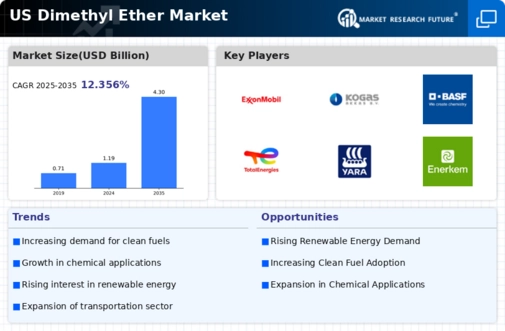The US Dimethyl Ether Market has been experiencing significant growth and transformation due to a multitude of factors, including increased demand for cleaner energy alternatives and advancements in production technologies. As companies seek to capitalize on the rising interest in renewable energy sources, the competition in this sector has intensified. Players in the market are focusing not just on production capacity but also on developing innovative isomerization and synthesis technologies to enhance efficiency and reduce emissions.
The landscape is characterized by a mix of established companies and emerging firms, each vying for market share while striving to meet the evolving needs of consumers and regulatory bodies advocating for sustainable practices. Analyzing the competitive dynamics within this market reveals key insights into trends, strategies, and potential challenges facing stakeholders.Greyrock Energy has carved out a notable presence in the US Dimethyl Ether Market, leveraging its expertise in producing high-efficiency DME through the use of advanced technologies.
The company's strength lies in its focus on sustainability and environmental impact, making it a suitable partner for organizations looking to adopt cleaner energy solutions. Greyrock Energy is recognized for its innovative approaches to resource management and has positioned itself effectively to meet the rising demand for dimethyl ether as a substitute for traditional fossil fuels. By establishing partnerships and collaborations within the energy sector, Greyrock Energy has enhanced its competitiveness and market position.
Their commitment to developing scalable production methods and maintaining high environmental standards further solidifies their role as a key player in the US market for dimethyl ether.ExxonMobil plays a vital role in the US Dimethyl Ether Market, offering a diverse array of products and services that align with the increasing focus on alternative fuels. The company benefits from its extensive research and development capabilities, allowing it to innovate and optimize production processes. ExxonMobil's strengths include its established brand reputation, global supply chain, and deep reservoir of technical expertise.
The company actively engages in mergers and acquisitions to expand its portfolio and capabilities in the renewable energy sector, ensuring that it remains competitive. With a solid market presence, ExxonMobil continues to explore opportunities to enhance the efficiency of its DME production while working on strategic initiatives that underscore its commitment to sustainable energy solutions in the US.




















